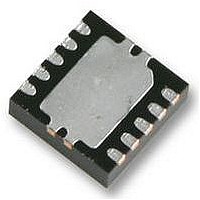LT3592EDDB#PBF Linear Technology, LT3592EDDB#PBF Datasheet - Page 9

LT3592EDDB#PBF
Manufacturer Part Number
LT3592EDDB#PBF
Description
IC, LED DRIVER, BUCK, DFN-10
Manufacturer
Linear Technology
Datasheet
1.LT3592EDDBTRMPBF.pdf
(24 pages)
Specifications of LT3592EDDB#PBF
Led Driver Application
Automotive, Industrial Lighting
No. Of Outputs
1
Output Current
500mA
Output Voltage
30V
Input Voltage
3.6V To 36V
Dimming Control Type
PWM
Topology
Buck
Operating Supply Voltage (typ)
5/9/12/15/18/24V
Number Of Segments
2
Operating Temperature (min)
-40C
Operating Temperature (max)
125C
Operating Temperature Classification
Automotive
Package Type
DFN EP
Pin Count
10
Mounting
Surface Mount
Operating Supply Voltage (max)
36V
Lead Free Status / RoHS Status
Lead free / RoHS Compliant
Lead Free Status / RoHS Status
Lead free / RoHS Compliant
Available stocks
Company
Part Number
Manufacturer
Quantity
Price
OPERATION
The LT3592 is a constant frequency, current mode step-
down LED driver. An internal oscillator that is programmed
by a resistor from the R
fl ip-fl op, turning on the internal 1.25A power switch Q1.
An amplifi er and comparator monitor the current fl owing
between the V
this current reaches a level determined by the voltage at
V
inputs, one from a voltage measurement and one from a
current measurement.
An instrumentation amplifi er measures the drop across
an external current sense resistor between the CAP and
OUT pins and applies a gain of 60 (BRIGHT low for dim
mode) or 6 (BRIGHT high for bright mode) to this signal
and presents it to one negative error amp input. The output
of a external resistor divider between OUT and ground is
tied to the V
amp input. Whichever input is higher in voltage will end up
controlling the loop, so a circuit in which current control
is desired (as for driving a LED) will be set up such that
the output of the instrumentation amp will be higher than
the V
feedback loop will act to limit the output voltage and prevent
circuit damage if an LED should go open circuit.
The positive input to the error amp is a 1.21V reference,
so the voltage loop forces the V
current loop forces the voltage difference between CAP
and OUT to be 200mV for BRIGHT mode and 20mV for
DIM mode. A rise in the output of the error amplifi er
results in a increase in output current, and a fall in the
C
. An error amplifi er that servos the V
FB
pin at the current level that is desired. The voltage
FB
pin and presented to a second negative error
IN
and SW pins, turning the switch off when
T
pin to ground enables an RS
FB
pin to 1.21V and the
C
node has two
error amplifi er output means less output current. Current
limit is provided by an active clamp on the V
this node is also clamped to the SHDN pin. Soft-start is
implemented by ramping the SHDN pin using an external
resistor and capacitor.
An internal regulator provides power to the control
circuitry and also includes an undervoltage lockout to
prevent switching when V
is low, the output is disconnected and the input current
is less than 2μA.
The switch driver operates from the input of the BOOST
pin. An external capacitor and internal diode are used to
generate a voltage at the BOOST pin that is higher than the
input supply, which allows the driver to fully saturate the
internal bipolar NPN power switch for effi cient operation.
An external diode can be used to make the BOOST drive
more effective at low output voltage.
The oscillator reduces the LT3592’s operating frequency
when the voltage at the OUT pin is low. This frequency
foldback helps to control the output current during startup
and overload.
The anode of the catch diode for the step-down circuit is
connected to the DA pin to provide a direct sense of the
current in this device. If this diode’s current goes above a
level set by an internal catch diode current limit circuit, the
oscillator frequency is slowed down. This prevents current
runaway due to minimum on time limitations at high V
voltages. This function can easily be disabled by tying the
DA pin and the catch diode anode to ground.
IN
is less than 3.25V. If SHDN
LT3592
C
node, and
3592fc
9
IN














